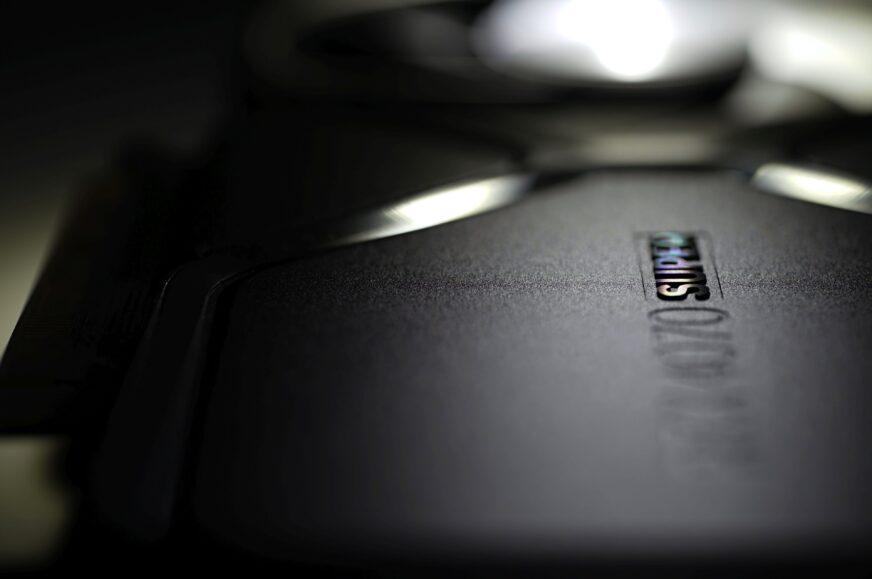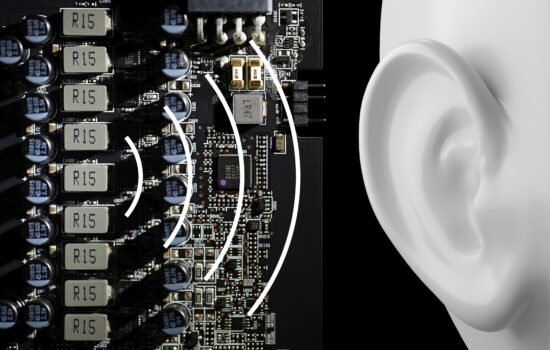Nvidia RTX 4070 Super FE in detail
The cheapest of the new GeForce RTX 4000 Super graphics cards – the RTX 4070 Super – has the biggest increase in SM blocks compared to the non-Super variants (i.e. to the RTX 4070), yet the price, at least on paper, doesn’t increase too much. The price-performance ratio is thus very attractive and attacks the competing Radeon (RX 7800 XT) even if you disregard the typical Nvidia “premium” stuff, such as significantly faster ray tracing, DLSS 3 or CUDA.
Conclusion
The significant increase in the functional SM block count (the RTX 4070 Super already has 7168) over the RTX 4070 and only a minimal price increase – at least on paper, we’ll see what the reality will be in stores – puts this graphics card in a very good position.
Gaming performance increase over the RTX 4070 averages 7–13% depending on resolution (the higher the resolution, the greater the difference), while power draw is only up to 3 % higher. This suggests that the power efficiency has improved with the RTX 4070 FE. This will also be due to the fact that Nvidia hasn’t pushed GPU clock speeds to the extreme, and with the Founders Edition they’re comparable in practice to those of the Asus Dual RTX 4070. Sure, this will vary design to design, and OC models will be a bit faster and also more power-hungry.
In the case of the RTX 4070 FE, however, we can note attractive efficiency. It is 50–55% higher than that of the Radeon RX 7800 XT Nitro+, which is really noticeable. And while we’re on the subject of competition, let’s elaborate a bit on the headline statement of this article – the RTX 4070 Super FE challenges the RX 7800 XT at its own game. All other characteristics aside, AMD graphics cards typically have a significantly better price/performance ratio when you disregard the things that GeForce clearly dominates in (i.e. mainly in higher ray tracing performance and lower power draw, or rather higher efficiency). But now that gaming performance-to-price ratio is pretty close to the Sapphire RX 7800 XT Nitro+ even with pure rasterization graphics. And that’s even counting with the “European price” of 660 EUR.
Sure, the Radeon has still better price/performance ratio outside of RT graphics, but only by some 8–9% at otherwise comparable speed. Of course, the RX 7800 XT is still more likely to be the cheaper graphics card. Both are suitable for QHD or even higher resolution monitors as long as you can accept upscaling technologies (DLSS and FSR). The RTX 4070 Super (like all GeForce RTX 4000 graphics cards) is attractive because of its support for DLSS 3 (with Frame Generation), where Ray Reconstruction is also available in version 3.5. We covered this technology in detail as part of our tests of Cyberpunk 2077 in RT Overdrive settings. The difference in frame rate is dramatic, with DLSS on “performance” when Frame Generation is enabled about two-and-a-half-fold, and that’s because of, among other things, the support for Ray Reconstruction (new with DLSS 3.5) while maintaining decent image quality. Judge for yourself from the photo comparison. DLSS 2.x and DLSS 3 is supported approximately by 380 games to date (AMD FSR 2 and FSR 3 is supported by less than half of titles).
If you don’t care about gaming performance and you’re picking a workstation graphics card, the RTX 4070 Super is a pretty good option for lower budget builds. For example, we already have a pretty dense comparison set in Blender where, with the Cycles renderer, the RTX 4070 Super under CUDA has about twice the speed of the RX 7800 XT (OpenCL). And with OptiX (Nvidia’s API that accelerates tensor cores), the GeForce’s lead is even bigger. But under OpenGL there are already situations where, for example, in Autodesk applications (CATIA, Creo, Energy, Medical or Siemens NX), the Radeon is noticeably faster. The results achieved in SolidWorks are even. For Affinity Photo, be sure to rather reach for the RTX 4070 Super and for Adobe Photoshop? Depends on the filter. Some are faster with the RX 7800 XT, others with the RTX 4070 Super.If you’re using Davinci Resolve, the performance of GeForce RTX 4000 (4060 and 4090) is well illustrated by recent thematic tests. AV1 encoding support is also worth mentioning (also applies to Radeon 7000).
The power draw under load ranges from 165–200 W depending on the application. With lighter workloads (video decoding, accelerated web browsing, etc.), the RTX 4070 FE Super can be said to be a significantly lower-power card compared to the RX 7800 XT Nitro+. While idle, and even with high-speed monitors or in multi-monitor systems, the Radeon is the one that is lower-power. But that’s only by a hair. The RTX 4070 Super, like other GeForce RTX 4000 graphics cards, only supports DisplayPort 1.4a, version 2.0 remains an exclusive benefit of AMD graphics cards.
The RTX 4070 Founders Edition cooler is very decent considering its smaller size. Compared to the Asus Dual 4070 with only slightly lower power draw, the temperature is indeed a bit higher, but it’s still low enough, and the tuning is along the lines of not making the operation too noisy. And it has been successful. Although it is not a downright silent card, we can talk about being average, which is a very good result considering the smaller size.
We’re awarding the RTX 4070 Super FE graphics card with the “Smart buy!” editorial award. That’s mainly due to the attractive price-performance ratio in the mid-range.
English translation and edit by Jozef Dudáš
| Nvidia RTX 4070 Super FE |
| + Very high performance (also suitable for 2160p/4K gaming) |
| + Top-notch efficiency... |
| + ... is unusually high considering the gaming/computing performance |
| + Favourable price/performance ratio |
| + Exclusive support for DLSS (3), CUDA and OptiX |
| + Given the cheaper RTX 4070 design, high GPU clock speeds |
| + AV1 encoding support |
| + Smaller size, better compatibility with everything around... |
| + ... and yet the noise level is still lower than high |
| - DisplayPort version 1.4a only (applies to all RTX 4070/graphics cards with Nvidia Ada Lovelace GPUs) |
| Suggested retail price: 660 EUR |
For cooperation in providing the tested hardware, we would like to give special thanks to the Datacomp e-shop
- Contents
- Nvidia RTX 4070 Super FE in detail
- Table of parameters
- Methodology: performance tests
- Methodology: how we measure power draw
- Methodology: noise and sound measurement
- Methodology: temperature tests
- Test setup
- 3DMark
- Age of Empires II: DE
- Assassin’s Creed: Valhalla
- Battlefield V
- Battlefield V with DXR
- Borderlands 3
- Control
- Control with DXR and DLSS
- Counter-Strike: GO
- Cyberpunk 2077
- Cyberpunk 2077 with DLSS
- Cyberpunk 2077 with DXR (and DXR with DLSS)
- DOOM Eternal
- F1 2020
- FIFA 21
- Forza Horizon 4
- Mafia: DE
- Metro Exodus
- Metro Exodus with DXR and DLSS
- Microsoft Flight Simulator
- Red Dead Redemption 2 (Vulkan)
- Red Dead Redemption 2 (Dx12)
- Shadow of the Tomb Raider
- Shadow of the Tomb Raider with DXR
- Total War Saga: Troy
- Wasteland 3
- Overall gaming performance and performance per euro
- CompuBench (OpenCL)
- SPECviewperf 2020 and SPECworkstation 3
- FLOPS, IOPS and memory speed tests
- 3D rendering 1/2 (LuxMark and Blender@Cycles)
- 3D rendering 2/2 (Blender@Radeon ProRender and Eevee)
- Photo editing (Adobe Photoshop, Lightroom and Affinity Photo)
- Broadcasting (OBS and Xsplit)
- Password cracking
- GPU clock speeds
- GPU and VRAM temperatures
- Net graphics card power draw and performance per watt
- Analysis of 12 V rail power supply (higher load)
- Analysis of 12 V rail power supply (lower load)
- Analysis of 3,3 V rail power supply
- Noise level
- Frequency response of sound
- Conclusion













